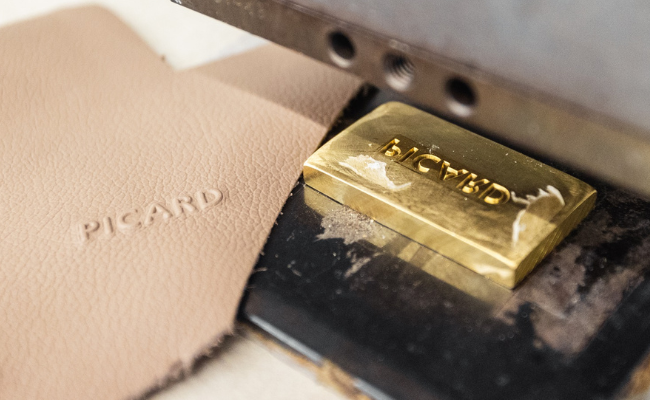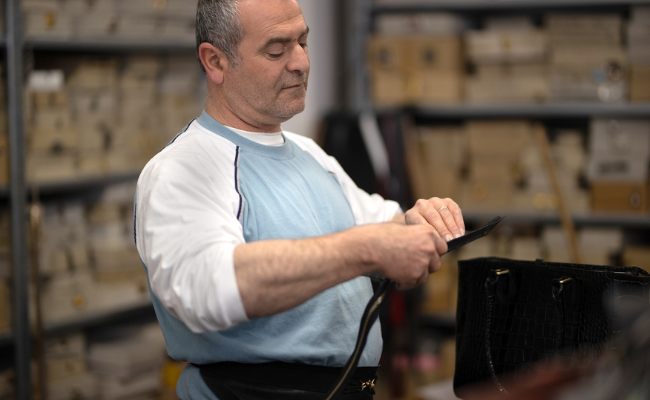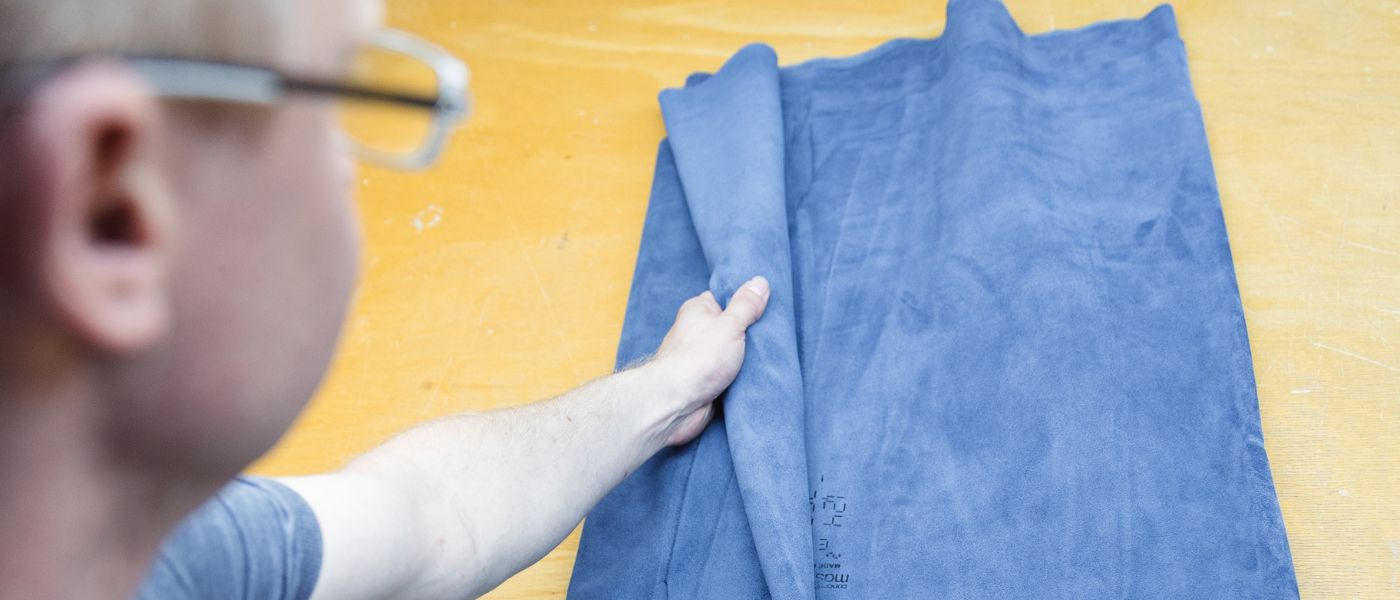Leather is a versatile and durable material used in many products, from shoes to furniture.
Whether you are looking for a new sofa or a new leather bag, it is crucial to recognize the quality of the leather.
But how do you distinguish high-quality leather from inferior versions? And how do you recognize the different quality levels of leather?
When choosing leather products, there are indeed a number of things to consider regarding the quality of the leather.
In this article we will provide you with comprehensive information and examine the characteristics and differences of the different leather qualities.
What is meant by the term leather quality?
Leather quality refers to the balance of properties of the leather . There are various factors that play a role in evaluating leather quality.
These factors include the grain and appearance of the leather , the feel, the softness, the color coverage, the tear resistance and the breathability of the leather.
✔ Grain and appearance of the leather:
The grain of the leather describes the natural surface structure of the material.
Expert knowledge : A fine grain is often considered a sign of high-quality leather , as it indicates good skin quality and careful workmanship.
Coarse grain , on the other hand, can indicate inferior leather or less careful processing.
The appearance of the leather is another important factor in assessing leather quality. This is about the even distribution of the color and the absence of spots or irregularities. High-quality leather has a uniform appearance and looks attractive overall.
✔ Haptics:
The feel of the leather refers to the feeling that the leather conveys when touched . High-quality leather should feel pleasant and supple.
It should not be too stiff or too soft . The feel can also be influenced by the way the leather is tanned. Careful tanning can result in a better feel.
✔ Softness of the leather:
The softness of the leather is another aspect that is taken into account when assessing leather quality.
High-quality leather is usually soft and flexible , while low-quality leather is often stiff and rigid. The softness of the leather can also depend on the type of tanning and post-treatment.
✔ Color coverage:
The color coverage of the leather is an important factor for leather quality. High-quality leather has an even color coverage , without spots or discoloration.
The color should also be durable over time and not rub off or fade.
✔ Tear resistance of the leather:
The tear resistance of the leather is another criterion for evaluating the quality of the leather. High-quality leather is usually very durable and tear-resistant.
It should also not be easily scratched or damaged.
✔ Breathability:
The breathability of the leather is an important factor for comfort . High-quality leather allows good air circulation and prevents the skin from sweating.
It is important that the leather is breathable to ensure that leather clothing, for example, is comfortable to wear.
Overall, leather quality plays a crucial role in the durability, comfort and appearance of leather products.
It is important to pay attention to the various quality features when purchasing leather goods to ensure that you are purchasing a high-quality product.

What other factors are important when evaluating leather quality?
When assessing leather quality, not only the characteristics mentioned above play a role. Another important aspect is the odor neutrality of the leather.
High-quality leather should not have an unpleasant smell, but should smell pleasant to neutral. The origin of the leather is also important.
Leather from sustainable production that takes animal welfare and environmental protection into account is often considered to be of higher quality.
The processing of the leather also plays a role. Careful and precise processing ensures a high quality of the end product.
Seams should be well finished and have no obvious defects. Ultimately, the price is also an indicator of the quality of the leather.
Expert knowledge: High-quality leather is usually more expensive because it is more complex to produce and is of better quality.
Recognizing leather quality: hints and tips
To determine leather quality, you should look for characteristics such as grain, feel, softness, color coverage, tear resistance and breathability .
These properties reveal a lot about the processing and durability of the leather.
Certificates and testing criteria are also helpful. They confirm the quality of the leather and give you security when buying.
So look for such certificates to identify high-quality leather.
Tanning plays a crucial role in leather quality. Vegetable tanning is environmentally friendly and gives the leather a natural look, while mineral tanning ensures robustness and durability. Synthetic tanning offers precise control over leather quality, but can affect the natural look.
Also think about where the leather comes from . Sustainably produced leather from species-appropriate animal husbandry and manufactured under fair working conditions is not only good for the environment, but also a sign of quality and responsibility.
Official testing criteria for leather quality
The quality of leather can be assessed using various norms and standards. These will help you to better understand the quality of leather and make the right choice when purchasing.
DIN 53333, for example, specifies the minimum tensile strength of leather . This is an important factor for the durability and robustness of the material.
Leather that meets this standard is robust and suitable for everyday use.
The optical quality of leather is also regulated by standards. DIN 53336 , for example , excludes visible defects such as scars or scratches .
This standard ensures that the leather is not only functional but also aesthetically pleasing and meets the high standards of a quality product.
In summary, it is important to pay attention to these and other relevant DIN standards when purchasing leather products to ensure that the leather meets the desired quality standards.
Important DIN standards for leather quality
Here is a selection of 15 DIN standards that play a role in evaluating leather quality :
-
DIN EN ISO 4045: Determination of pH and chromium content in leather.
-
DIN 53333: Determination of the minimum tensile strength of leather.
-
DIN 53336: Regulation of the optical quality of leather, exclusion of visible defects.
-
DIN EN ISO 4047 : Determination of total sulfated ash in leather.
-
DIN EN ISO 4048: Determination of dichloromethane soluble substances in leather.
-
DIN 53307: Determination of the content of washable substances in leather.
-
DIN 53314: Determination of chromium(VI) content in leather.
-
DIN ISO/TS 17226: Determination of formaldehyde content in leather.
-
DIN EN ISO 3378: Determination of resistance to grain bursting in leather.
-
DIN EN ISO 2589: Determination of thickness of leather.
-
DIN EN ISO 3376: Determination of tensile strength of leather.
-
DIN EN ISO 2417: Determination of static water absorption of leather.
-
DIN EN ISO 14268: Determination of water vapor permeability of leather.
-
DIN EN ISO 11640 and DIN EN ISO 105-X12: Determination of the rub fastness of dyes on leather.
- DIN EN ISO 5402: Determination of flexural strength of leather.
Are there quality certificates that help in assessing the quality of leather?
When purchasing leather products, it is helpful to pay attention to various quality certificates that provide information about the manufacturing conditions and the quality of the leather.
Some of the most well-known certificates are:
-
“bluesign” certificate: This certificate stands for sustainable and environmentally friendly production. Products with the “ bluesign ” certificate guarantee that environmental protection and resource conservation were taken into account throughout the entire manufacturing process.
-
“OEKO-TEX Standard 100” certificate: This certificate confirms that the leather does not contain any harmful chemicals and is harmless to health. It is a good indication that the leather was produced under safe and responsible conditions.
-
“Blue Angel” label: This label is awarded to products that are particularly environmentally friendly. Leather products with the “ Blue Angel ” label stand for low emissions and environmentally friendly production.
- “GOTS” (Global Organic Textile Standard) seal: This seal is awarded to products made from organically produced materials. With leather products bearing the “GOTS” seal, you can be sure that they were produced under ethical conditions and meet high environmental standards.
These certificates are not only a sign of quality, but also of responsibility towards the environment and society.
When purchasing leather products, they can serve as an important guide to help you make a conscious and sustainable choice.
Conclusion
The quality of the leather is crucial if you are looking for durable and stylish leather products.
Look for features such as grain, feel, softness, color coverage, tear resistance and breathability to assess the quality of the leather.
These properties are indicators of the durability and aesthetics of the material.
When selecting leather goods, you can rely on PICARD's expertise. PICARD offers high-quality leather products that impress with both functionality and design.
By choosing PICARD leather goods, you are opting for products that impress not only with their quality, but also with their elegance and durability.
FAQ
What should you pay attention to when buying leather?
When buying leather products, you should pay particular attention to the quality. Check the grain, the feel, the softness and the color coverage of the leather.
Compare different products and convince yourself of the quality of the leather.
How do high-quality leathers differ from low-quality leathers?
You can recognize high-quality leather by its even and natural grain. It feels smooth and supple and is comfortable to wear.
The color lasts a long time and shows no signs of fading.
Low-quality leather, on the other hand, often has irregularities, such as an uneven grain or a rough feel.
It may be stiff and less comfortable to wear. The color may fade or discolor more quickly.
Remember that the quality of the leather is crucial for the longevity and comfort of your products. It is better to invest in high-quality leather to enjoy your leather goods in the long term.
Find out more by reading our other articles:








